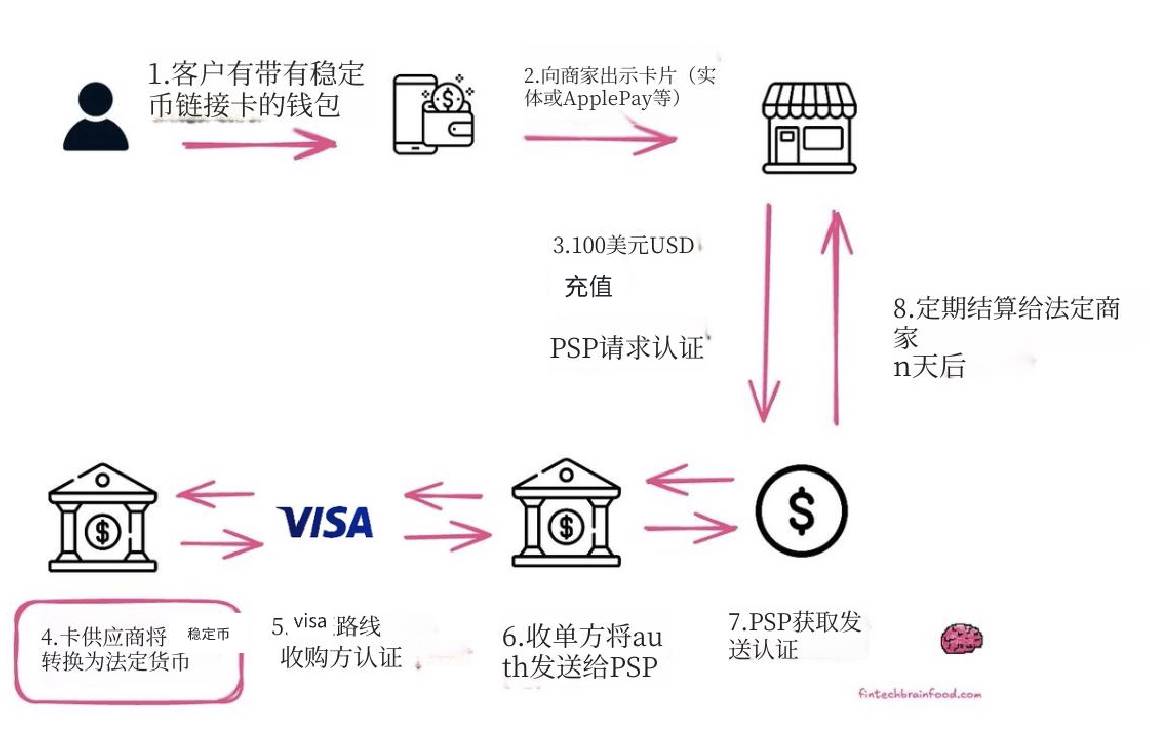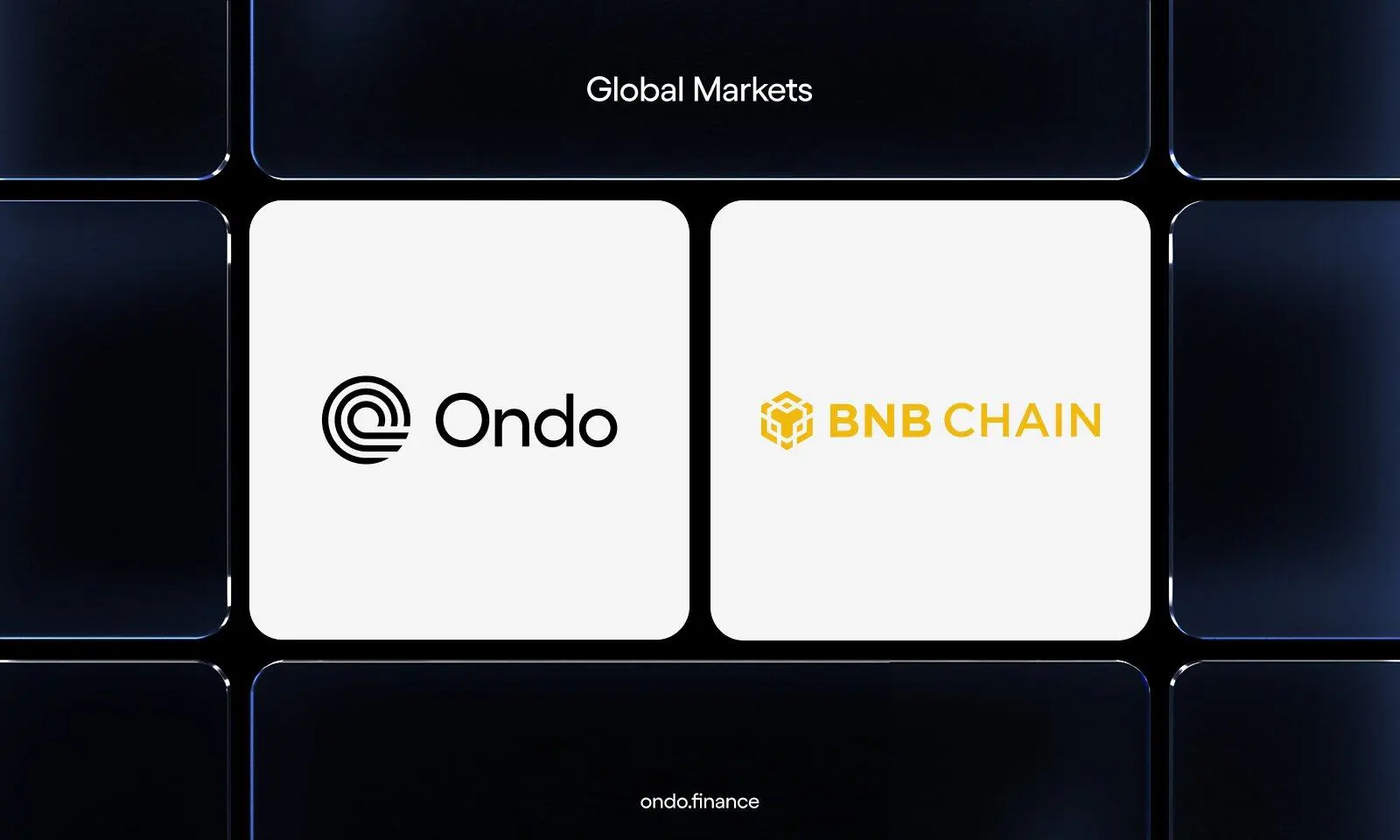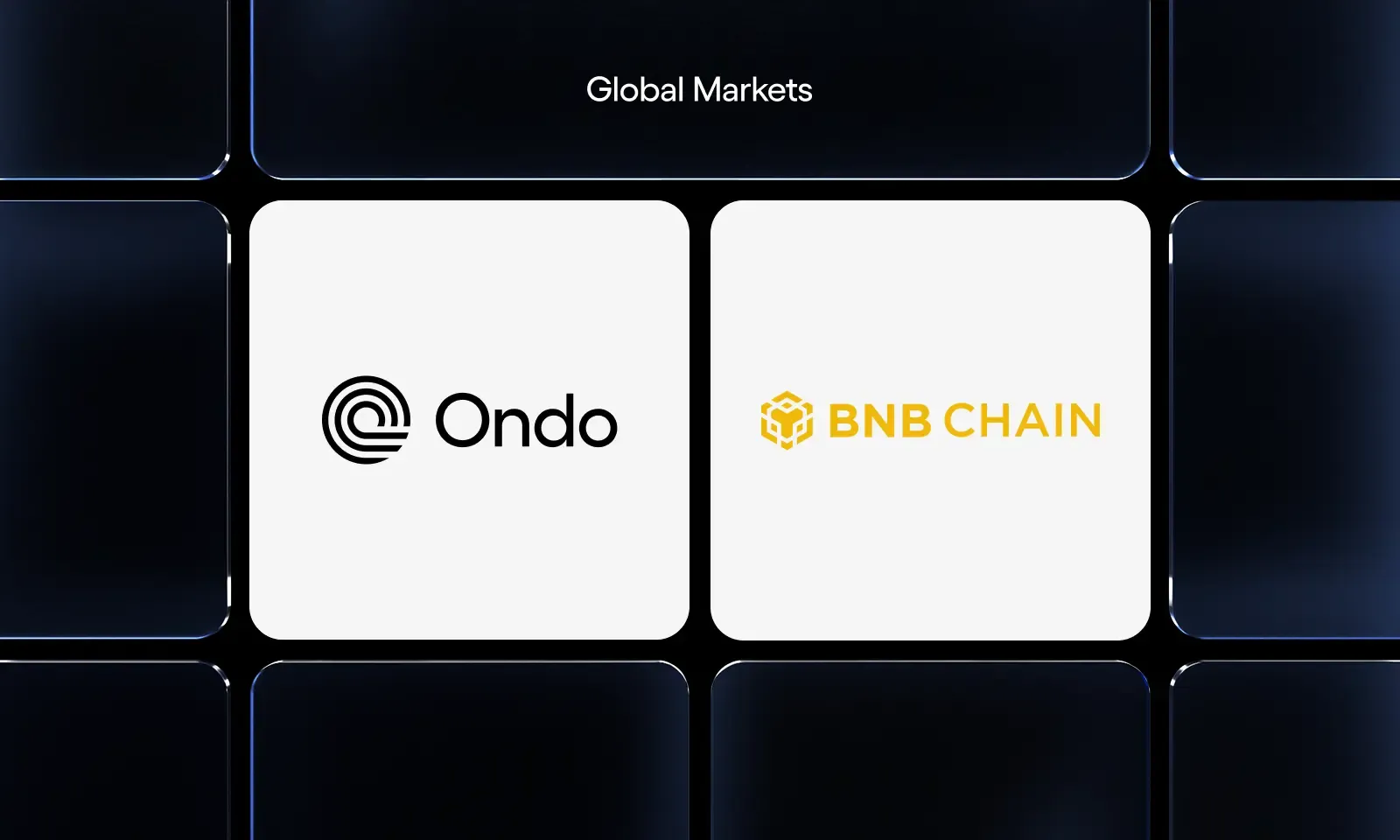If your responsibility is to find new ways to grow revenue and better serve customers, you should definitely pay attention to the evolution of these cards.
Author: Simon Taylor
Translation: Deep Tide TechFlow
This week, I gave a keynote speech on stablecoins at a bank board meeting. While they gained a lot from the lecture, what truly amazed them was when I bought a cup of coffee using a card linked to a stablecoin.
Everyone was focused. Imagine if you could store your balance as a stablecoin, spend it anywhere at any time, use it for credit borrowing, and also earn yields—what need would there be for banks? Of course, most domestic bank users would not immediately accept this model.
But the genie is out of the bottle.
That £3.50 cup of coffee showed them a future where banks could become optional.
To understand why this cup of coffee is so important, you need to look at how the card payment sector is surpassing banks and experiencing explosive growth.
The Card Payment Sector is Expanding
Three of the four categories below barely existed ten years ago, and now they have become major competitors.
The affluent are becoming a key target.


A "stablecoin-linked" card can be issued by centralized exchanges (like Coinbase) or take a "self-custodial" form.
While there are issuers and project managers behind the card, there are no banks or centralized institutions managing the underlying funds.
This fourth type of card has a disruptive impact.
Let’s dive deeper.
(If you want to go further, theoretically, there’s no reason to prevent new banks (Neobanks) or traditional banks from allowing users to spend directly from stablecoin balances, but for now, it’s helpful to keep these four product categories distinct for comparison.)
What is a Self-Custodial Stablecoin Linked Card?
A stablecoin-linked card allows you to use stablecoins (like USDC or USDT) to spend at any merchant that accepts the Visa or Mastercard standard payment network. Pay special attention to Step 4.

Assume a user holds a stablecoin-linked card and has a stablecoin balance in their account. These stablecoins may have been paid into the user's wallet (like Metamask, Phantom, or similar wallets) in the form of salary.
The user goes to the store to spend, using either a physical or virtual debit or credit card.
The merchant's point-of-sale (POS) system treats the card as a regular bank card and sends an authorization request to the payment service provider (PSP).
The card issuer (like Gnosispay, EtherFi) immediately sells the user's stablecoins, converting them to fiat currency and authorizing the transaction.
Subsequently, Visa routes the authorized transaction to the acquiring bank (the merchant's bank) and marks it as an approved transaction.
The acquiring bank sends the transaction information to the payment service provider (PSP).
Once the PSP receives the authorization, it notifies the merchant that the transaction can be completed, allowing the user to leave the store with the goods (payment completed).
A few days later, the settlement is completed through traditional fiat payment systems.
For consumers and merchants, the experience of this payment method is almost indistinguishable from using traditional credit or debit cards.
The Biggest Highlight of Stablecoin Linked Cards is Their Fully Wallet-Based Design.
As a user, you manage these stablecoins through your private key. Self-custodial cards create a whole new economic model for the card payment system—no intermediaries, direct control of assets.
How Self-Custodial Stablecoin Linked Cards Work
Bringing the Payment Model of the Affluent to the Mass Market.
Imagine if you could connect your Visa card directly to a private safe at home (with only you holding the key), and it could still be used in all checkout scenarios.
Your funds wouldn’t need to be stored in institutions like "banks" or "Coinbase," but rather in a smart contract wallet on the blockchain, fully under your control.
How It Works:
You load this high-tech "safe" (i.e., wallet or vault) with stablecoins, like EURe (a euro stablecoin on the blockchain).
When you swipe your card to buy coffee, a vault like Ether Fi instantly builds a bridge connecting your personal wallet to the Visa network. It pays the merchant in regular euros (fiat) while deducting the equivalent amount of EURe from your safe.
There are currently many similar examples, such as Etherfi, GnosisPay, Thorchain, Pyra, etc., each differing in pricing, blockchain preferences, and service advantages. But Etherfi is a very suitable case for explanation.
Vault-Backed Cards
Ether.fi's "Lending and Spending" Model
You store stablecoins and other crypto assets in the Ether.fi vault, and in return, it provides you with about 10% yield while allowing you to borrow fiat at a 4% interest rate.
The design of this card is very clever, offering two payment modes:
Direct Pay Mode: You directly use your stablecoin (like USDC) balance for spending, simple and straightforward.
Borrow Mode: This is the key. You can use your entire asset portfolio (like weETH, eBTC, etc.) as collateral to borrow fiat (annual interest rate of 4%) for spending.
You don’t need to sell the underlying assets, so it won’t trigger a tax event.
At the same time, you can continue to earn staking or re-staking rewards on the assets.
The vault is a place to lock up collateralized assets (similar to a bank safe) and earns yield by lending assets to protocols like Morpho, Aave, or Centrifuge. That 10% yield comes from others borrowing your funds and paying interest.
Why Are These Cards Significant?
Ether.fi is essentially a wealth management tool disguised as a credit card, designed for DeFi natives. But why shouldn’t everyone enjoy such a tool?
In fact, most people do not have such a high-risk appetite and are unwilling to park all their assets in DeFi protocols for a 10% annual yield. However, the idea is indeed intriguing—if collateralized credit cards that combine yield and borrowing mechanisms become mainstream applications, could they become a killer app?
Potential Issues
The "Be Your Own Bank" Problem: "Self-custody" is a double-edged sword. If you lose your password (i.e., "private key"), there’s no customer service hotline to call, nor is there a "forgot password" link to click. Your funds will be lost forever. This is a terrifying prospect for the average user.
Complexity and Fees: Although operations are becoming simpler, using stablecoin-linked cards still requires interaction with the blockchain. This may involve "Gas fees" (network transaction fees), which can seem unfamiliar and unacceptable to users accustomed to free debit cards.
Volatility of Collateralized Assets: What happens if the value of your crypto asset portfolio drops significantly? The protocol may automatically sell assets to repay the loan. This situation can be very painful.
Capital Risk: Not all customers are willing to take the risk of putting 10% or more of their net worth into cryptocurrency, especially in cases where this model truly yields significant returns.
Yield May Not Be Sustainable: The current 10% APY is based on the state of the crypto market, but if the market declines, these yields may significantly decrease.
Today, stablecoins are widely considered suitable for global south markets, where high inflation is a serious issue. However, most people I encounter underestimate the potential adoption of this model among the domestic affluent population.
For Consumers in the Global South, Stablecoin Linked Cards Represent Freedom.
If you don’t have a regular credit or debit card, it means you can’t use ChatGPT, AWS, or Netflix. For consumers and growing businesses outside the G20, stablecoin linked cards are a significant breakthrough.
Stablecoin Linked Cards: An Attempt to Democratize the High Net Worth Lifestyle
The wealthy rarely sell assets; they choose to borrow against them. This not only avoids tax issues but typically, the appreciation of assets will exceed the cost of debt financing. Stablecoin linked cards are bringing this high-net-worth wealth management approach to the mass market.
For Crypto Millionaires, This is a Banking Alternative.
For crypto millionaires, this card is like a self-sovereign version of the Amex Black Card. It is a capital-efficient tool that declares, "I can access my wealth anytime, anywhere, on my own terms, without asking a bank."
The Ultimate Product of "Having Your Cake and Eating It Too": With this card, you can earn 8% on your assets in DeFi while also using it for purchases at the supermarket. It turns your self-custodial wallet into a high-yield checking account.
Should We Abandon Emerging Banks in Favor of Building Stablecoin Linked Cards?
Not so fast.
These products still face some systemic challenges:
Currently, most businesses and consumers' lives remain off-chain, and the complexities and risks of a full transition to on-chain cannot be overlooked.
User Experience Bottleneck: The bridge from "crypto-native" (managing Gas fees, wallet permissions) to "simple spending" (one-click payment) still resembles a rickety rope bridge. To truly launch these products (with Pyra being an exception), users need to put in a tremendous amount of effort. You need stablecoins, but transferring the balance to the correct wallet on the right chain can be frustrating.
Cards for Exclusive Bull Markets: These cards perform exceptionally well in bull markets, especially when the regulatory environment in the U.S. supports cryptocurrencies. But let’s not forget the lesson from Celsius: it once offered incredible rewards but went bankrupt during the market crash. Those rewards disappeared, and a significant amount of users' savings evaporated along with them. In DeFi, there are no bankruptcy courts; when this happens, you can only be liquidated.
Liability Gap: What happens if these products become widely popular and start bankrupting or liquidating mainstream consumers? This will become a significant issue that needs to be addressed.
Currently, most self-custodial cards face a cold start problem: you need to fund the underlying DeFi protocols and vaults. Additionally, you need to download new applications, create new wallets, and complete new KYC (Know Your Customer) processes.
I believe the following two things may happen:
These cards and their underlying protocols will integrate into the fintech industry.
"On-chain/Off-chain conversion" will become invisible, and users will not need to perceive the complex operational processes.
Not everyone is ready to fully enter the on-chain world.
Fintech Frontend, Crypto On-chain Backend
The step of "converting to fiat currency" in our previous diagram of how stablecoin-backed credit cards work is just a time node. Over the next decade, more and more assets will migrate on-chain.
This trend manifests in several ways:
On-chain yield and lending functions will be integrated into fintech applications and wallets through Vaults.
Native on-chain wallets will become the largest fintech companies of the future.
The on-chain/off-chain conversion of stablecoins will become invisible in most applications, with users not needing to perceive the complex operations.
Instant settlement will become a killer application for stablecoins.
Vaults are the key tools for integrating on-chain lending into fintech.
For example, the Morpho vault product is a typical case. Morpho is an on-chain decentralized lending protocol, and its "vault" product simplifies on-chain yield management. Users can deposit funds (like USDC) into the vault, which automatically manages lending to provide users with optimal risk-adjusted returns.
Coinbase now offers Bitcoin collateral loans to regular users. However, when users click the "borrow" button, Coinbase is not directly lending its own funds to the user. In fact, Coinbase sends the user's Bitcoin to the on-chain Morpho protocol as collateral and obtains a USDC loan from the protocol on behalf of the user. Users do not need to interact with "Morpho," Gas fees, or crypto wallets; they simply see a straightforward "borrow" button in the familiar Coinbase app.
(As a side note, I believe these vaults are more significant than traditional peer-to-peer lending because they are more efficient, offer higher initial yields, and are easier to distribute. In a sense, they are the ultimate embodiment of embedded finance.)
If we were to choose a fintech startup today, where would you position yourself, on-chain or in the fiat track?
In the current regulatory environment, it is hard to find reasons to choose off-chain technology as the foundation for a fintech company. A classic case is Sling Money, a company founded by the former Chief Product Officer of Neobank Monzo, which could have chosen any technology but ultimately opted for a more suitable on-chain solution for cross-border payments to create a global version of Venmo.
Founder Mike explained the reasons:
On-chain payments are now fast enough to meet everyday usage needs.
It can outsource about 70% of the complexity of ledger building and reconciliation.
For those who have been involved in financial services product development, reconciliation work accounts for at least half of the development tasks. It is a challenging job filled with edge cases. While on-chain payments may not be perfect in some aspects, they allow products to be brought to market faster and cheaper.
As applications gradually embed on-chain finance, the costs and barriers of "on-chain and off-chain conversion" are rapidly decreasing.
Currently, converting from USD stablecoins to fiat USD on consumer platforms may incur fees of up to 2%. This inefficiency contradicts the original intention of stablecoins to "save costs," but this situation is changing rapidly.
For example, Revolut recently announced direct 1:1 conversion of stablecoins to fiat USD with no price spread. At the same time, they launched a zero-fee staking service with yields up to 22%. Notably, Revolut is a fintech application with 65 million users.
In the future, we will see "instant settlement" become a killer application for stablecoins. The existing model of quickly converting stablecoins to fiat for settlement will gradually disappear as more merchants and banks begin to accept stablecoin payments directly. Stablecoins will transform into tokenized deposits that can be settled with central banks.
As card networks, acquiring banks, and card issuers begin to adopt this model more frequently, the time lag from "swiping the card" to the merchant receiving payment will shrink to zero. Currently, businesses create this time lag by charging merchants 1%-2% fees for early payments, but this model will also gradually disappear.
The Era of Stablecoins Has Arrived
When Revolut launched zero-fee stablecoin services to its 65 million users, the promise of 24/7 instant dollar payments began to become a reality.
Cards like Ether Fi or Pyra have already shown early signs of future development.
Once the vault concept is integrated into every fintech application, non-bank institutions can offer customers the following services:
Borrowing from the decentralized finance (DeFi) market, with annual percentage yields (APY) ranging from 4% to 22% (depending on the borrowing term).
Lending funds to the DeFi market, earning yields of 7%-12%.
These fintech companies achieve profitability by earning interest rate spreads and profits, but they are not engaged in lending on their balance sheets. This is a distributed on-chain private credit model and a new revenue model for the financial industry.
While this model will not completely replace balance sheet-based credit card lending, it provides an attractive platform for private credit, especially for fintech companies in the "buy now, pay later" (BNPL) model or any banks looking to drive revenue growth without increasing balance sheet risk.
The concept of vaults is not limited to cards; it can be applied to any form of lending. But once you witness the actual operation of these cards, it becomes hard to ignore their potential.
If your responsibility is to find new ways to grow revenue and better serve customers, you should definitely pay attention to the evolution of these cards and how they can help you meet customer needs.
That cup of coffee I bought for the bank board? I believe they saw their future, and they know it.
Notes from ST:
Georges Lemaître's "Big Bang Theory" also extends to the card space.
Competitors like Centrifuge, Veda, and Aave are developing similar products.
免责声明:本文章仅代表作者个人观点,不代表本平台的立场和观点。本文章仅供信息分享,不构成对任何人的任何投资建议。用户与作者之间的任何争议,与本平台无关。如网页中刊载的文章或图片涉及侵权,请提供相关的权利证明和身份证明发送邮件到support@aicoin.com,本平台相关工作人员将会进行核查。




